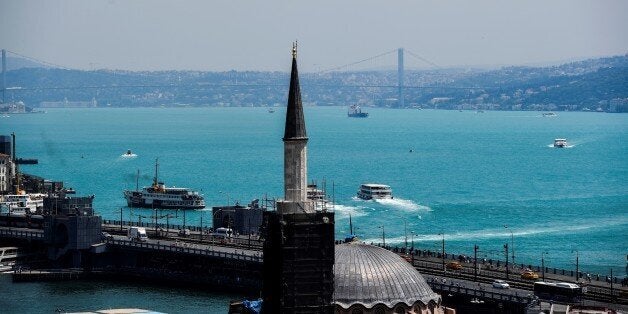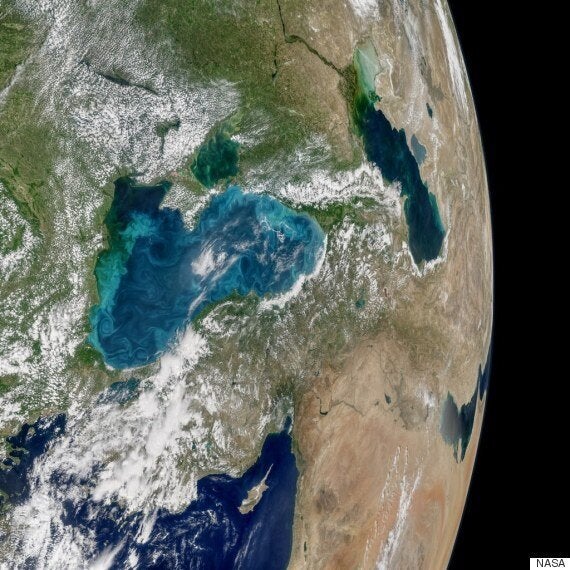
BULENT KILIC via Getty Images
Γιατί ο Βόσπορος έγινε τιρκουάζ; Το επιστημΟ Βόσπορος μπορεί να είναι γνωστός για πολλά πράγματα, αλλά τα τιρκουάζ και καταγάλανα νερά του δεν είναι ένα από αυτά. Χάρη σε ένα επιστημονικό φαινόμενο που ονομάζεται «phytoplankton bloom» (άνθιση φυτοπλαγκτού), στο οποίο το νερό γεμίζει με τους συγκεκριμένους μικροοργανισμούς, τα συνήθως μαύρα νερά του Βοσπόρου θυμίζουν τα νερά του Αιγαίου ή της Καραϊβικής.

Διαφήμιση
«Φέτος, οι πολλές βροχές μετέφεραν θρεπτικά συστατικά από την Σαχάρα στη Μαύρη Θάλασσα, και δημιούργησαν ιδανικό περιβάλλον ώστε να ανθίσει το Φυτοπλαγκτόν», είπε ο περιβαλλοντολόγος Berat Haznedaroglu στο AP.
Το φαινόμενο είναι τόσο ισχυρό αυτή την στιγμή που φαίνεται ακόμα και από το διάστημα.
